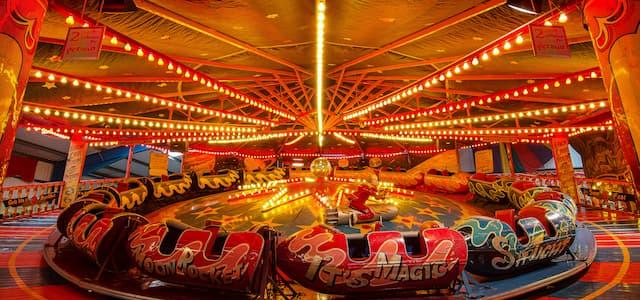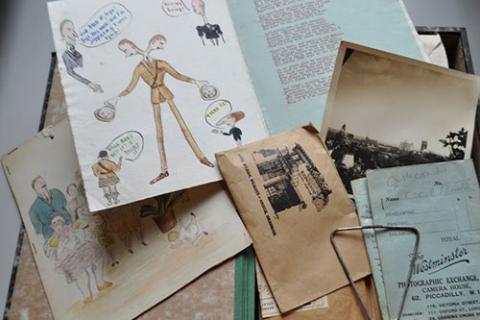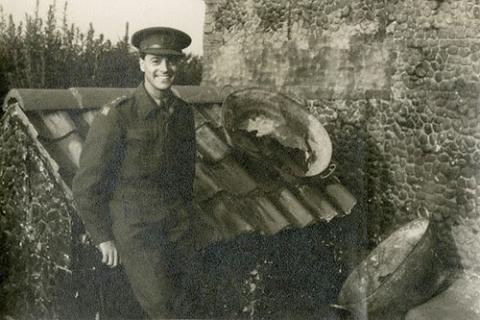
Saved: Archive of 20th century’s leading theatrical designer, Oliver Messel
The personal archive of one of the twentieth century’s foremost theatrical designers, Oliver Messel (1904-1978) has been acquired by the University of Bristol Theatre Collection, thanks to a generous grant of £80,000 from NHMF.


Messel’s career spanned the worlds of stage, film, opera, interior design, portraiture and architecture. He transformed the professional status of designers giving them, for the first time, the same ‘billing’ as actors.
Whether creating sets for the stage or screen, designing costumes or war-time camouflage schemes, painting portraits, designing hotel suites, shop displays or luxurious houses, Messel was a remarkable theatrical illusionist who, in his own words, 'attempted to use every device to make as much magic as possible'.
Born in 1904, Messel became one of the ‘bright young things’ in 1920s London, along with others such as Cecil Beaton and Rex Whistler. He received his first theatrical commission in 1925, designing masks for the Diaghilev ballet, Zéphyre et Flore and went on to become the pre-eminent designer of his day. He designed landmark productions including Sleeping Beauty (1946) and Ring Round the Moon (1950) as well as films such asCaesar and Cleopatra (1945). His successful career as a world-renowned designer continued into the 1970s.
In 1964, he bought a small, dilapidated house on Barbados called Maddox and began to redesign and rebuild it. The house he created used all his theatrical design skills and was such a success that he was soon in great demand as an architect and interior designer. Over the next 12 years, he designed 26 homes on Mustique and Barbados, including Les Jolies Eaux for Princess Margaret. The light sage green shade of paint he favoured is now known as ‘Messel Green’.
The Oliver Messel Archive offers unrivalled insight into the interrelationship between this remarkable artist’s personal life and his professional output. It includes scrapbooks, sketchbooks, costume and set designs, stage and film plans, architectural plans and a selection of plaster casts, masks and costumes.
The archive also contains letters from such notable names as Lauren Bacall, Lilian Baylis, Max Beerbohm, John Gielgud, Vivien Leigh and Michael Redgrave, and photographs by leading photographers, including Cecil Beaton, Norman Parkinson and Lord Snowdon, as well as by Messel himself. There are also working drawings for some of his interiors and furniture, and plans and elevations for houses in the Caribbean.
Jo Elsworth, Director of the University of Bristol Theatre Collection, said: “The Messel Archive is immensely rich and, in conjunction with the V&A Messel Collection, it forms a unique record of one of Britain’s greatest theatre designers, providing a wonderful insight not only into the process of ‘making’ theatre or film but also the theatricality inherent in twentieth century society life.
“As a fully accredited museum, the University of Bristol Theatre Collection has the knowledge and expertise to preserve the ‘Messel magic’ for future generations, making it available and accessible both to scholars and the general public. We now hope to raise the money required to catalogue and conserve the archive.”
The Oliver Messel Archive was originally bequeathed to the artist’s nephew Thomas Messel and, until now, has remained in private hands. Messel’s design collection – bequeathed to another nephew, Antony Armstrong-Jones, first Earl of Snowdon – has been housed in the Victoria and Albert Museum since 1981.
Sir Peter Luff, Chair of NHMF, said: “This immensely rich archive forms a unique record that reveals much about twentieth century society as experienced through the eyes of the talented Oliver Messel. This vital money from the National Heritage Memorial Fund means that it is now in public ownership where it can be conserved and enjoyed by future generations.”
Notes to editors
About the University of Bristol Theatre Collection
The Theatre Collection is one of the world’s largest archives of British theatre history and Live Art and is an accredited museum and international research facility open to all. Founded in 1951 to serve the first UK university drama department, its collections cover the period from 1572 to the twenty-first century and its visitors include everyone from international scholars to family historians.
Since 1951, the Theatre Collection has expanded to become a fully accredited museum and theatrical research centre. It also continues to serve its original purpose as a research resource for members of the University of Bristol and the Bristol community.

